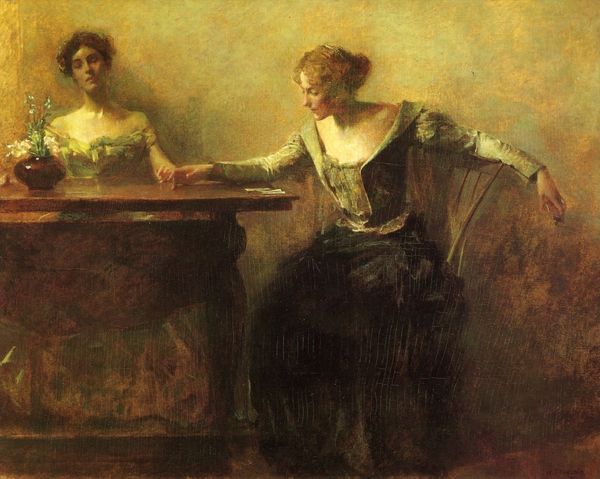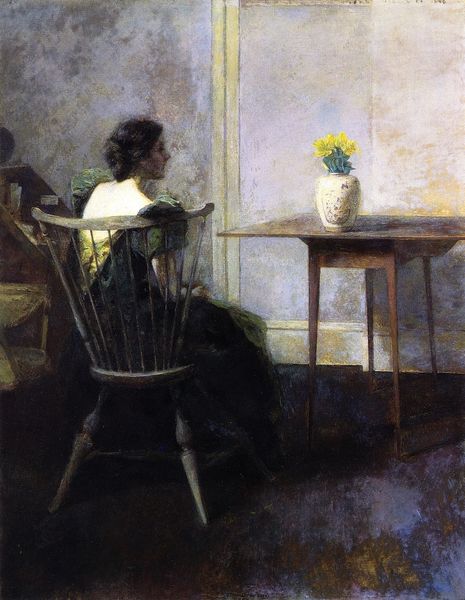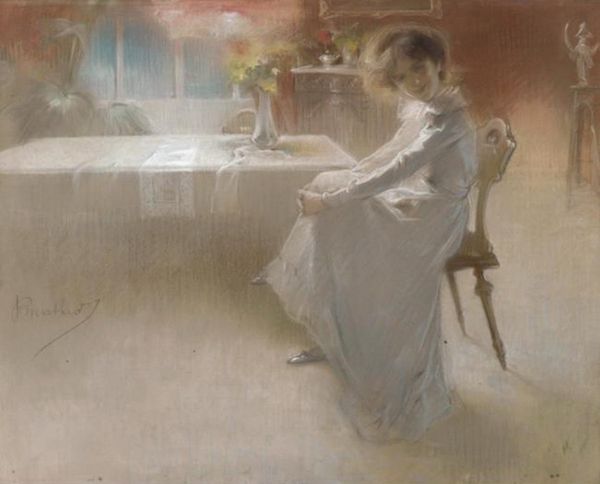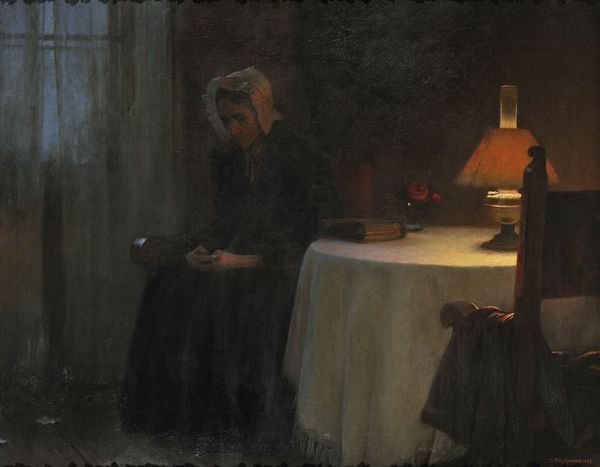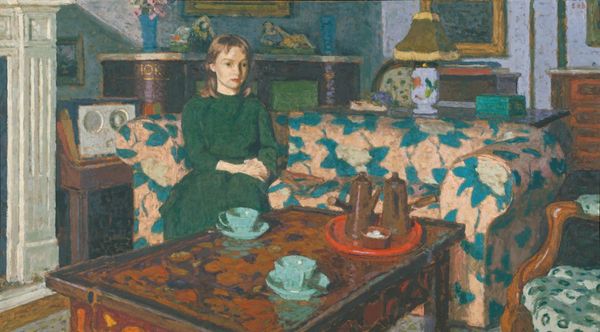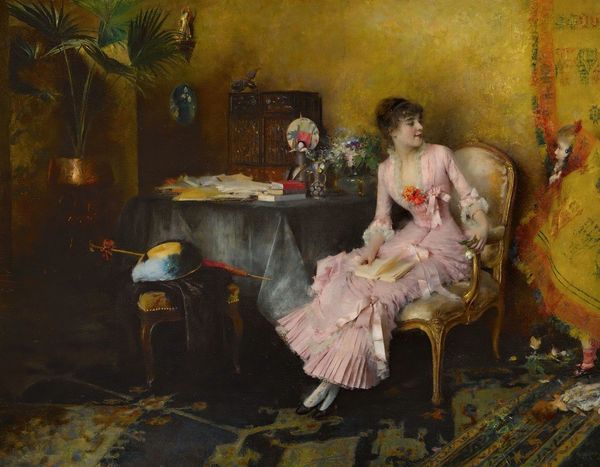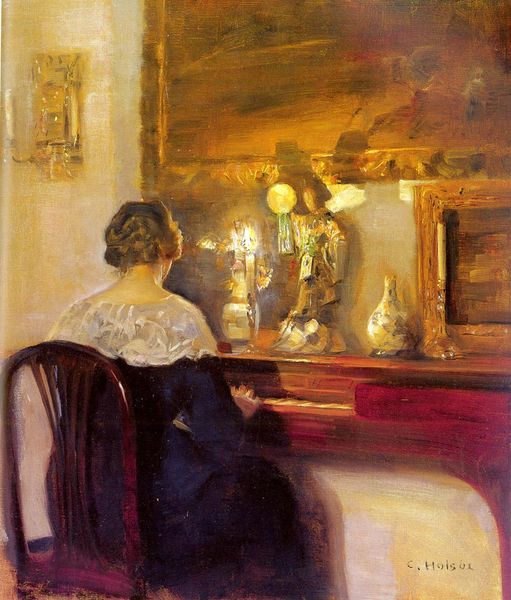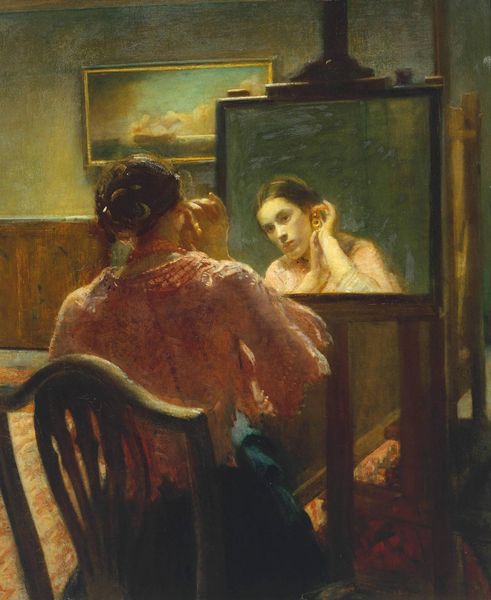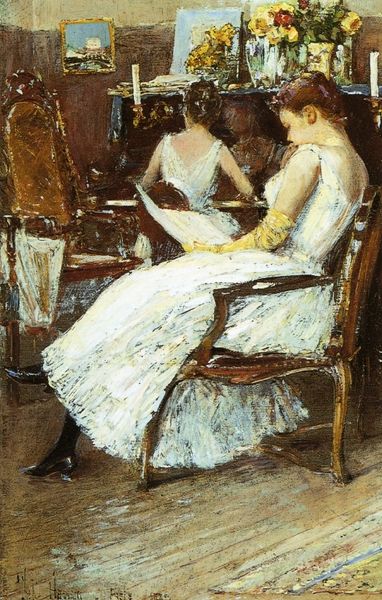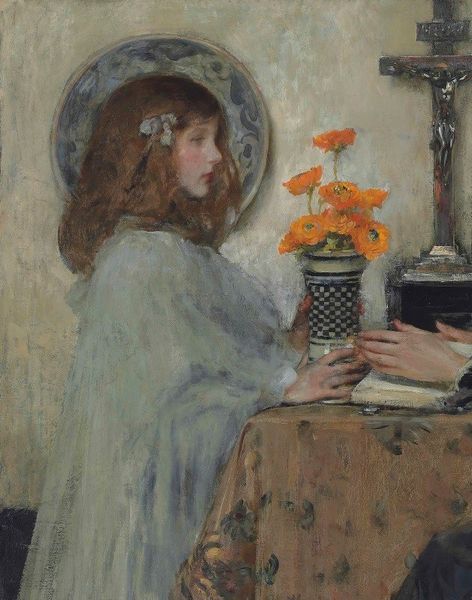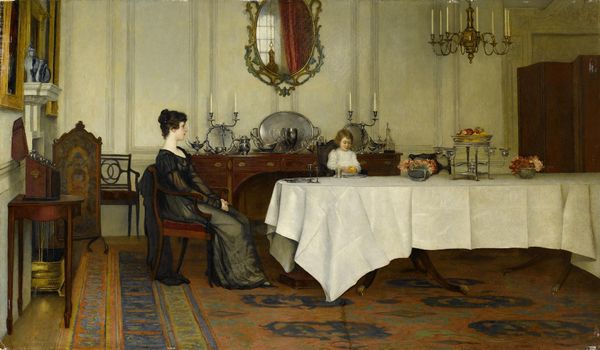
Copyright: Public Domain: Artvee
Editor: Thomas Wilmer Dewing's "A Reading," painted in 1897, presents two women in a muted, almost dreamlike setting. The composition is dominated by the table, creating an interesting division of space. What can you tell me about it? Curator: Well, let’s think about the time it was made. The late 19th century witnessed shifting roles for women in society. The act of reading, depicted here, gains importance. Is it a symbol of independence, intellectual freedom, perhaps access to progressive thought, or merely a cultured pass-time? The way in which art institutions showed this sort of work impacted the public's understanding. Editor: That's fascinating! I hadn't thought about the social implications of reading itself. Curator: Precisely. Paintings like these, showcased in prominent galleries and exhibitions, shaped perceptions of ideal womanhood. What does the restrained palette and quiet composition convey, then? How might this image have reinforced or challenged the accepted gender norms of the time? Editor: It seems like both reinforcement and subtle challenge. The intimacy feels progressive, but it’s also very controlled. It lacks dynamism; I’d imagine a curator then would consider this as representing feminine poise, yet they also have these knowing looks on their faces. Curator: Good eye. What if this knowing look actually *creates* agency within the painting? Does Dewing's artistic circle add context to our reading? Who bought this, how was it seen, and what effect did it have? Editor: Wow, that adds another layer to the piece. Considering its reception is super interesting! Curator: It is crucial. It encourages one to reconsider our initial interpretations of Dewing's painting in its cultural context and also within today's values.
Comments
No comments
Be the first to comment and join the conversation on the ultimate creative platform.
